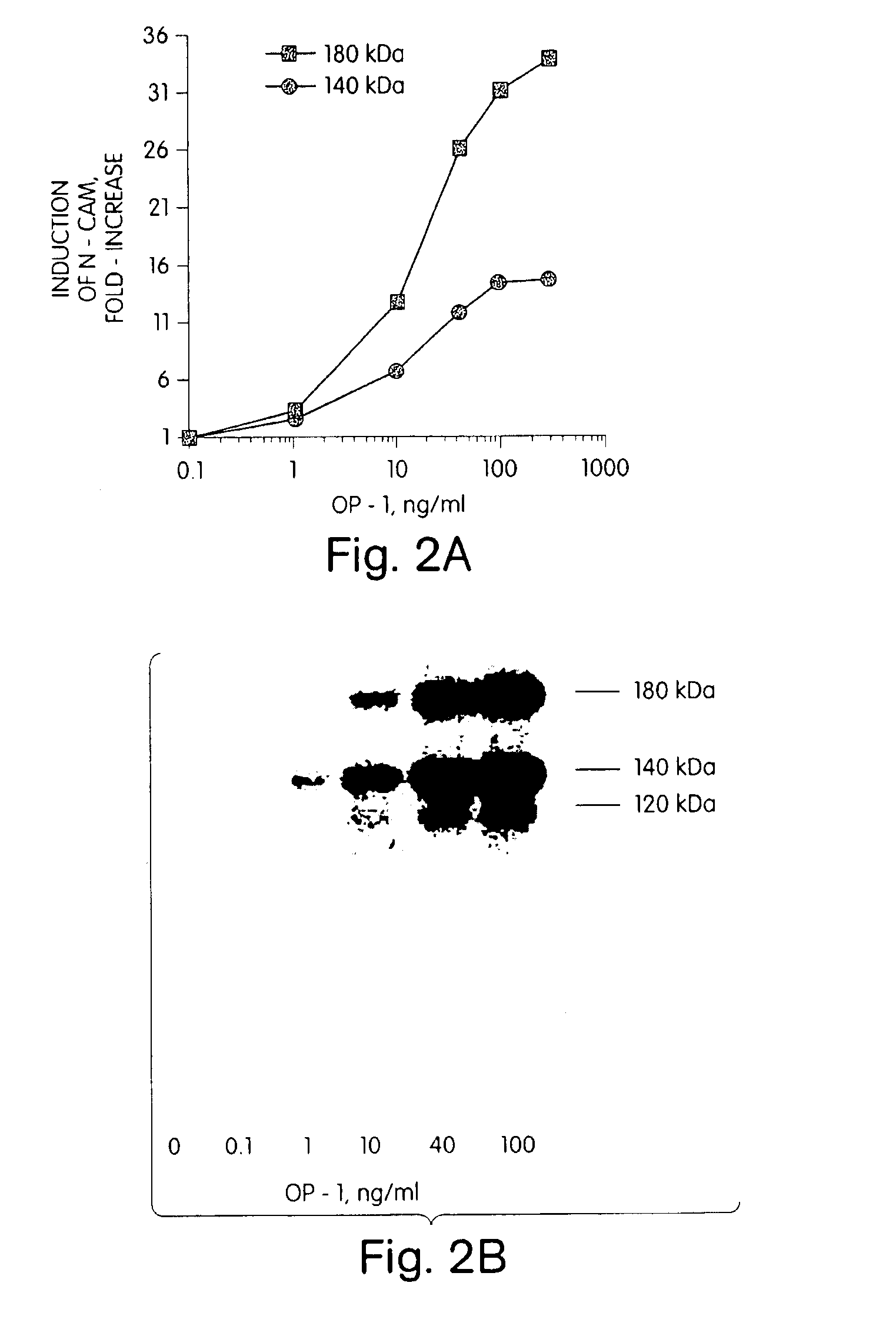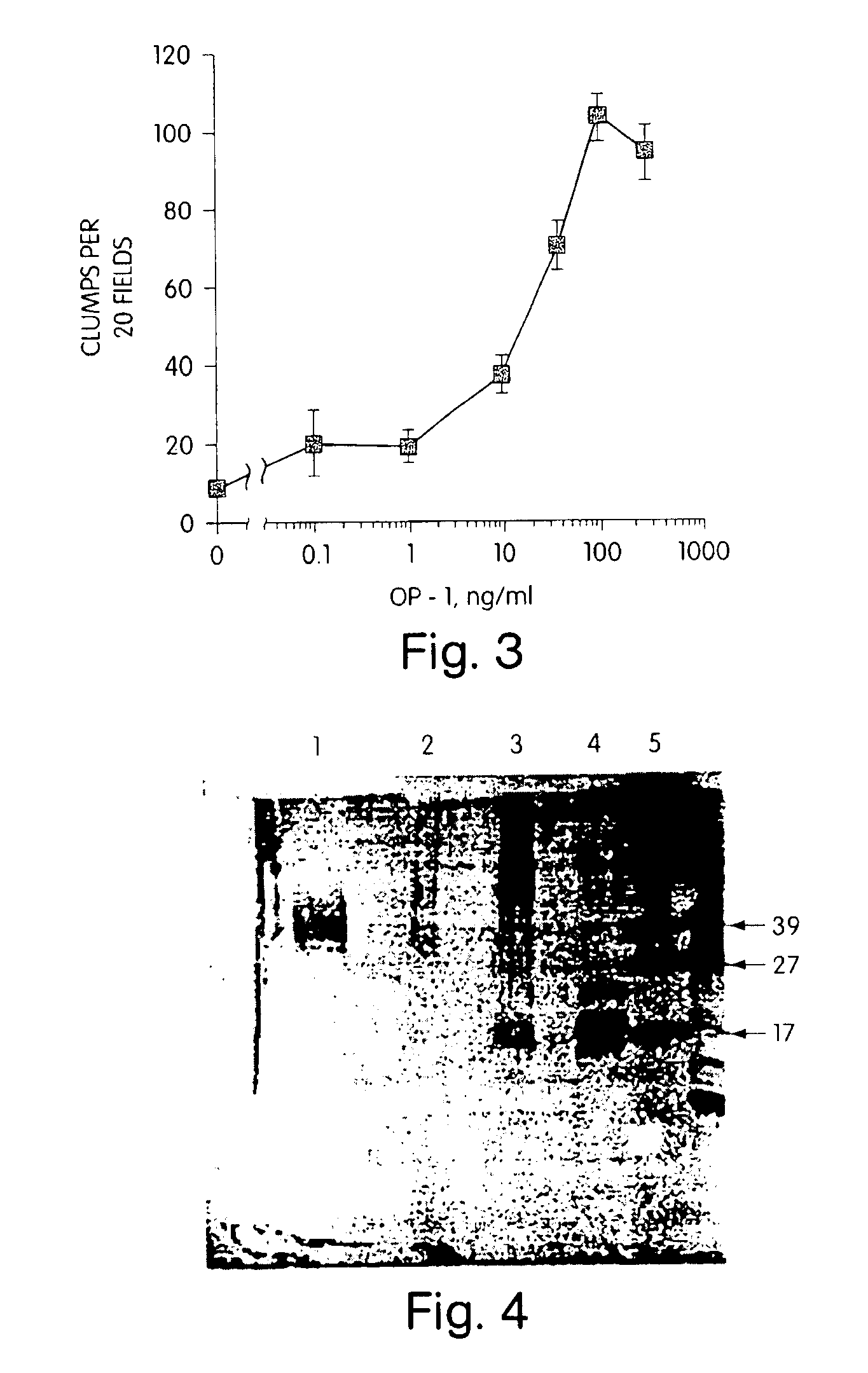Morphogen-induced nerve regeneration and repair
a morphogen-induced nerve and regeneration technology, which is applied in the direction of animal cells, peptide/protein ingredients, impression caps, etc., can solve the problems of inability to repair the damage caused by these neuropathies, the neural pathways of mammals are particularly at risk, so as to reduce the risk of dying, significantly inhibit the effect of cellular metabolic dysfunction, and reduce the risk of death
- Summary
- Abstract
- Description
- Claims
- Application Information
AI Technical Summary
Benefits of technology
Problems solved by technology
Method used
Image
Examples
example 1
Identification of Morphogen-Expressing Tissue
[0087]Determining the tissue distribution of morphogens may be used to identify different morphogens expressed in a given tissue, as well as to identify new, related morphogens. Tissue distribution also may be used to identify useful morphogen-producing tissue for use in screening and identifying candidate morphogen-stimulating agents. The morphogens (or their mRNA transcripts) readily are identified in different tissues using standard methodologies and minor modifications thereof in tissues where expression may be low. For example, protein distribution may be determined using standard Western blot analysis or immunofluorescent techniques, and antibodies specific to the morphogen or morphogens of interest. Similarly, the distribution of morphogen transcripts may be determined using standard Northern hybridization protocols and transcript-specific probes.
[0088]Any probe capable of hybridizing specifically to a transcript, and distinguishin...
example 2
Morphogen Localization in the Nervous System
[0091]Morphogens have been identified in developing and adult rat brain and spinal cord tissue, as determined both by northern blot hybridization of morphogen-specific probes to mRNA extracts from developing and adult nerve tissue (see Example 1, above) and by immunolocalization studies. For example, northern blot analysis of developing rat tissue has identified significant OP-1 mRNA transcript expression in the CNS (U.S. Ser. No. 07 / 752,764, and Ozkaynak et al. (1991) Biochem. Biophys. Res. Comm., 179:11623 and Ozkaynak, et al. (1992) JBC, in press). GDF-1 mRNA appears to be expressed primarily in developing and adult nerve tissue, specifically in the brain, including the cerebellum and brain stem, spinal cord and peripheral nerves (Lee, S. (1991) PNAS 88: 4250-4254). BMP2B (also referred in the art as BMP4) and Vgr-1 transcripts also have been reported to be expressed in nerve tissue (Jones et al. (1991) Development 111:531-542), althoug...
example 3
Morphogen Enhancement of Neuronal Cell Survival
[0098]The morphogens described herein enhance cell survival, particularly of neuronal cells at risk of dying. For example, fully differentiated neurons are non-mitotic and die in vitro when cultured under standard mammalian cell culture conditions, using a chemically defined or low serum medium known in the art, (see, for example, Charness (1986) J. Biol. Chem. 26:3164-3169 and Freese et al. (1990) Brain Res. 521:254-264.) However, if a primary culture of non-mitotic neuronal cells is treated with a morphogen, the survival of these cells is enhanced significantly. For example, a primary culture of striatal basal ganglia isolated from the substantia nigra of adult rat brain was prepared using standard procedures, e.g., by dissociation by trituration with pasteur pipette of substania nigra tissue, using standard tissue culturing protocols, and grown in a low serum medium, e.g., containing 50% DMEM (Dulbecco's modified Eagle's medium), 50%...
PUM
| Property | Measurement | Unit |
|---|---|---|
| distance | aaaaa | aaaaa |
| distance | aaaaa | aaaaa |
| weight | aaaaa | aaaaa |
Abstract
Description
Claims
Application Information
 Login to View More
Login to View More - R&D
- Intellectual Property
- Life Sciences
- Materials
- Tech Scout
- Unparalleled Data Quality
- Higher Quality Content
- 60% Fewer Hallucinations
Browse by: Latest US Patents, China's latest patents, Technical Efficacy Thesaurus, Application Domain, Technology Topic, Popular Technical Reports.
© 2025 PatSnap. All rights reserved.Legal|Privacy policy|Modern Slavery Act Transparency Statement|Sitemap|About US| Contact US: help@patsnap.com



